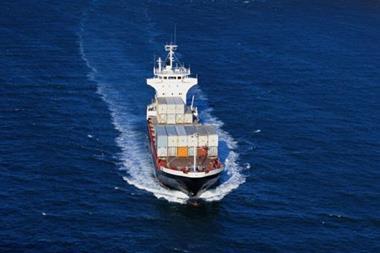Technology, specialised service providers, industry associations, local and international law enforcement agencies and other governmental and non-governmental bodies are all adding impetus to the fight against cargo crime. As liaison between interested parties grows, and affected companies share experience and best practice, so the response to cargo crime becomes increasingly effective.
At an operational level, detailed risk identification and analysis are becoming commonplace in the cargo sector. As a result, the amount of operational security data and preventative recommendations available to cargo owners, carriers and insurers have increased. This overall increase in practical activity and the associated gathering of knowledge are undoubtedly positive steps.
Many companies and organisations with cargo exposures now find themselves at least at the stage of having developed a preventative strategy and approved, or initiated, a series of risk management measures. But if you do not implement proposed actions effectively or monitor for compliance, there will be little identifiable impact. No-one is under the illusion that there is an easy solution to cargo crime problem. But there appears to be some lack of resolve with regard to the amount of time, resources and sheer perseverance required to effect a meaningful and continuing reduction in exposure to this risk.
Effectively implementing well-planned practical recommendations and achieving results requires a long-term approach and commitment. The success of introducing and applying new day-to-day operational procedures depends more on a change in culture than on imposing a series of practical measures. And, while you can introduce changes in cargo operations relatively quickly, a culture change takes far longer.
The most valuable statistic in helping to tackle the problem effectively is the figure produced by the US National Cargo Security Council. According to them, more than 80% of all cargo thefts involve the use of inside information.
While this statistic is clearly a cause for concern, it is also the source of significant hope. Obviously, not all ‘inside jobs’ are instigated, aided and abetted from the same point of origin, but the very fact that they are classified as being ‘inside’ (or integral to the normal transit process) means that you can take constructive and controlled measures to reduce or remove the ‘inside’ risk.
As part of your cargo risk management strategy, you need to have an effective cargo security plan for each operational location under your control. In a multinational organisation, a location cargo security plan typically forms an important part of a co-ordinated global cargo security plan, which establishes the standard security criteria and evolves with the changing cargo patterns of your organisation. At the level of the operational location, local practices, service capabilities and experience all form part of the risk analysis and the development of effective preventative measures.
Developing an effective cargo security plan involves considering information security, selecting external cargo service providers, selecting carriers and transit planning.
Information security
One of the most important aspects of cargo crime prevention is information security. Establishing effective restrictions on both the internal and external distribution of cargo information, while maintaining an efficient operational environment are difficult but important challenges.
Selecting service providers
Transporting cargo successfully depends on the performance of numerous external service providers. Carriers, freight forwarders, customs agents, security companies, warehouses and logistics firms are just a few of the third party providers that may be involved in any one cargo movement.
Selection of principal cargo service providers and establishment of a formal contract and of a working partnership are vital elements in the longer-term security of goods in transit. As with any other link in the production, supply and sales chains, the provision of professional external cargo services is critical to the success of the business venture, both financially and where reputation is concerned.
You should always give close attention to selecting and contracting external cargo service providers. It is not enough simply to focus on price and service; you should also put emphasis on cargo risk management and avoiding cargo crime. Representatives of most carriers or freight forwarders are able to talk easily about their service capabilities, geographic scope and price ranges. How many can talk as convincingly about their risk management or cargo security strategy?
This is not to suggest that your choice of such service providers should be determined on security grounds alone. But it is advisable to ensure that prospective providers have a credible and structured response to the risk management question and that their response is validated prior to entering into any contract.
In terms of traditional or standard contracts of carriage, most cargo-orientated organisations have a level of knowledge and experience as to exactly what is provided under what conditions. When it comes to the broader and increasing array of modern cargo services, the level of understanding and experience relating to service standards and contracts is not always as high. Naturally, buyers should always read the small print. You can also often glean a great deal from going through some simple, if somewhat time-consuming, pre-purchase investigations as to exactly what services will be provided, and by what type of personnel.
A typical area requiring careful scrutiny is cargo security services, which include, for example, watchmen or guards and cargo escorts. The steady escalation of cargo crime has inevitably led to an equally rapid growth in cargo security services. Now, the protection and security of goods in transit is clearly a different challenge to that of keeping static premises and equipment secure. Ensuring that cargo security service providers have proven experience in that field (as opposed to being experienced in a more general security sense) is fundamentally important. It is equally important to ensure that the personnel employed to provide services are experienced and properly trained in cargo security practice and procedures.
There have been cases, for example, where the armed guards used to escort high risk cargoes in certain Latin American countries have been unable to perform their duties, because of lack of training, old age, or outdated and inappropriate weapons. The 65 year old armed guard (previously employed on bank foyer duty) who discharged his revolver into his foot during a cargo hijack, and the authorised but untrained armed cargo escort who chased failed hijackers through a popular burger bar in Buenos Aires are extreme cases of unsuitability. They also graphically demonstrate the difficulties that can arise when demand for specialist services outstrips the established supply.
Of course, there will always be a limit to the amount of checking that you can reasonably do before appointing external service providers. Where practicable, the use of recognised industry associations or otherwise independently monitored/controlled bodies to establish a minimum level of service standards will undoubtedly aid the selection process. Perhaps the best selection criteria are direct references obtained from existing customers.
Selecting carriers
While carriers fall under the generic category of cargo service providers, their importance to the success of a strategy to avoid or reduce the risk of cargo crime is crucial. As with any other externally provided service, you should base your selection on a number of fundamentals, not just price.
Key considerations should include:
Planning transits
In any cargo transit planning process, aim to have your cargo cleared and delivered with minimal delay. The longer cargo is at rest, the more susceptible it is to theft, pilferage and leakage of information. Wherever practicable, select the most direct route available, minimising or avoiding transhipment and in-transit storage. You should also try to avoid road cargo transits during hours of darkness and, if possible, during peak traffic periods.
Ideally, road transits with an estimated journey time of less than 2.5 hours should be completed in one uninterrupted journey. Road transits with an estimated journey time of more than 2.5 hours should have a planned route with pre-designated safe stopping points for re-fuelling and driver comfort breaks. You should agree the proposed route with the driver (and escort, if applicable), including any planned stopping points, prior to departure.
If the goods that you are despatching are of mixed values or mixed attractiveness to thieves, the most valuable or most attractive cargo should be stowed furthest away from the container, trailer or truck doors. Consider using blind marks or decoy marks, on those packages stowed nearest to the truck or trailer doors.
If you regularly send cargoes to the same customers or consignees, work with them to agree the best practices to avoid or deter criminals. Items to discuss should include cargo stowage techniques, the selection of delivery routes and times, and the establishment of non-repetitive delivery patterns. You should also work with your carrier to review safety and security procedures for your cargoes. Ensure that you maximise the benefit available from sharing the carrier’s (and wherever possible your competitors’) broader experiences.
In common with other types of security, effective cargo security is about continued vigilance and attention to the basic details. Technological developments, particularly in the fields of sophisticated alarm devices and satellite tracking of cargoes, provide an added level of support in the fight against cargo crime, but they are not the whole solution.
Effective cargo security depends very much on the awareness, action and interaction of people. Continued vigilance is a challenge. While implementation requires a level of procedural discipline, it is equally important that cargo risk awareness and cargo security become an integral part of the working way of life.
--
Robert Volante is managing director, Cargo Solutions Limited.
Email: r.volante@cargo-solutions.com
www.cargo-solutions.com
LORRY HI-JACKS AND ROBBERIES
The UK National Stolen Lorry Load Desk (NSLLD) recorded 79 lorry hi-jacks and robberies during 2000, up from 51 recorded in 1999. The total value of the loads stolen amounted to around £18.4m compared to £7.6m in 1999. In 14 of last year’s incidents, the value of the load was £450,000 or more. In 69 incidents, the criminals used or threatened violence during the theft.
Many incidents occurred while lorries were either at traffic lights or at road junctions, allowing offenders to open a door of the cab and threaten the driver. The other favoured hijack method was to flag the lorry down, using high-powered cars/vehicles, sometimes with a blue flashing light on the dash and/or headlights flashing and occupants wearing either yellow fluorescent jackets or uniform type clothes and peak caps. Lorry drivers, thinking it was a police spot check, stopped, which allowed the offenders to gain access. On other occasions, fake accidents or vehicles were placed to stop the lorry.
The NSLLD aims to:
--
Further information is available from Frank Heinrich-Jones, director, PLC Consultancy Services.
E-mail: mail@plcci.co.uk
DRINKS INDUSTRY INITIATIVE
Diageo group security expert Jim Smith says that a new drinks industry crime prevention initiative known as DIPS (Drinks Industry Project Scotland) has been set up under the aegis of the Scottish Business Crime Centre in Stirling. The Centre is a government funded organisation with a full time police attachment, and is supported by all the main players in the whisky/spirit industry in Scotland together with their principal hauliers. DIPS plans to set up a database covering items of mutual interest, such as load thefts, problem ports/routes and other criminal activity affecting the industry.



















